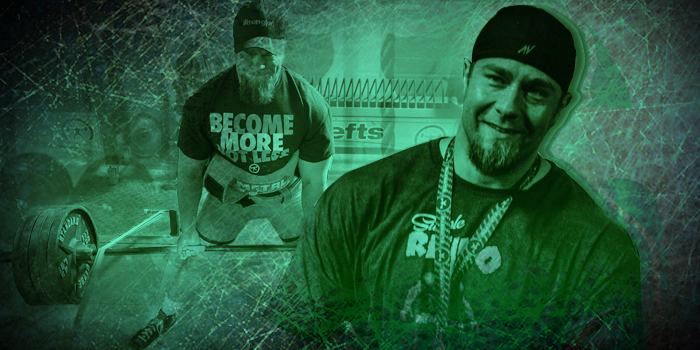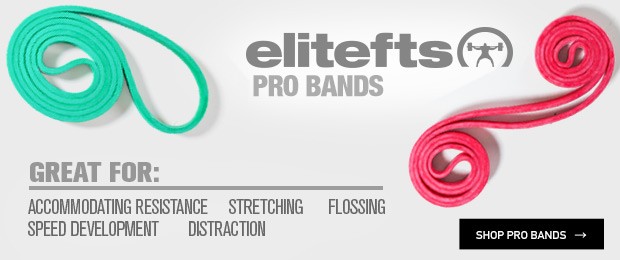
At least two weeks into the COVID-19 quarantine, and I am sure many of you are going stir crazy. The gyms in my area are all shut down for a minimum of a few more weeks. So how do you make the best of this time? If you were prepared, you already have some bands and maybe some accessories. If not, you still have a chance to get some. This article is not about the bands or weights but how you use the bands or weights.
RECENT: Train Your Closet Bodybuilder This Off-Season
If you have a bar, rack, and a bench, you can do quite a bit, but exercise selection will be limited over the long term. Training in a garage or your living room with minimal equipment doesn’t have to be boring. You can use these 12 techniques to keep your workouts fresh and keep your sanity without going to the gym. For those of you with gym access, these will give you a head start over all those stuck without gym access.
Drop Set
Many techniques can be used, but the drop set might be one of the most famous after supersets. Do your reps to near failure (or set number of reps), strip some weight off, go to near failure, strip some weight off, and push to failure. You could do two, three, or four drops.
Example 1 - Do 10 barbell curls, drop some weight, do 10 curls, drop some weight, and rep out.
Example 2 - Band good mornings - Using a strong band do 20 reps, switch to an average band, do 20 reps, switch to an average band, and shoot for 20 more.
Ascension Set
Performing ascension sets are not nearly as common as drop sets. That does not mean they are any less important. Choosing your starting weight is a little more difficult. Start with a moderate weight, perform a set number of reps, add some weight, perform your reps, add more weight, and do another set. You can do three or more ascensions to reach your desired total reps.
Example 1 - Five push-ups, add a mini band around back, 5 push-ups, switch the band to a monster mini, 5 push-ups, switch to light band, and rep out.
Example 2 - Overhead press - Do 8 reps, add some weight, do 6 reps, add some weight, and rep out.
Superset
One of the most widely used techniques and when done correctly, you’ll know why. Two exercises for the same muscle paired together done back to back will easily increase your volume in a very short time.
Example 1 - Barbell curls for 12 reps, then do 20 band hammer curls.
Example 2 - Wide grip push-ups for 20 reps then do 20 band flys.
Tri Set/Giant Set
With limited exercise selection, supersets, tri sets, and giant sets can get a little tricky. Using more exercises is not always better. Just like supersets, you will do exercises for the same muscle, but this will be three or more exercises together. Your recovery will also need to be on point.
Tri set example 1 - Barbell curls for 12 reps, then 20 band hammer curls, then 8 reverse grip barbell curls.
Tri set example 2 - 20 bodyweight squats, then 12 band leg extensions, and then walking lunges 10 each leg
Giant set example 1 - Band pull over for 15 reps, Chin-ups for 10 reps, Low band rows for 12 reps, and Wide-grip pull-ups for 6 reps
Giant set example 2 - Leg press for 25 reps, Leg extension for 20 reps, hack squat for 15 reps, and 6 lunges each leg
Pulse/No Lockout
Time under tension is king if you want the muscle to grow. Not locking the weight out will keep that tension. The pulse is a non-lockout technique you can use to drive even more blood into a very fatigued muscle by using a small pulsing movement to extend the set.
Example 1 - Goblet squats for 2 minutes, do not lock the weight out.
Example 2 - Band pushdowns - Keep the tension on the triceps and crank out as many full reps as you can. When you are about to fail, do small pumping movements to drive as much blood into the muscle as possible.
Pre-Fatigue
This one is as simple as it gets. Perform an isolation movement before performing a compound movement. This can help you warm up, add volume, and you can use this to force other muscles to work harder in the compound movement.
Example 1 - Before Squatting you will do band leg curls for 4 sets of 12 with toes turned in.
Example 2 - Do 4 sets of 15 on the Reverse Hyper™before deadlifting.
Manual Reps/Partner Resistance
With limited equipment, this allows you to work a muscle completely without the need to do drop sets. Your partner can allow you to keep working the muscle by applying enough tension to allow you to complete the reps as you fatigue.
Example 1 - Partner curls with a towel. 8 reps. Partner gives enough tension so the movement does not stop but is very slow in tempo.
Example 2 - Partner leg curls. Lifter lays on floor on stomach. Partner sits on lifters upper hamstring/glutes. Pushes one foot down while lifter resists. This should be done randomly.
Rest-Pause
Rest-pause sets allow you to do a few more reps than normal with the same weight. A set that might normally allow 8 reps might be stretched to 12 reps by resting for 10-15 seconds between each mini set. This could be done for multiple sets.
Example 1 - Rolling dumbbell extensions on floor - Use a weight where 15 reps is about the max. Do 4 reps per set. Shoot for 6 sets, going all out on the last one. Ideally, you will fail on the last set or very close. If you miss before, reduce the load and continue. Rest 10 seconds between sets. This version is based off Scott Stevenson’s muscle round.
Example 2 - Incline bench - Use about 75% of max. Do 5 reps, rest 10-20 second, do 1-5 more reps, rest again, and try for another 1-5 reps.
1 ½ Reps
Adding an extra half rep is another great way to extend a set. Squats, side raises, and presses, are great options. Keep the tension and do the half rep in the hardest part of the lift.
Example 1 - Dumbbell side raise - Raise to the top, lower halfway, return to the top, and then lower to bottom. That equals one rep.
Example 2 - Squat town to below parallel, come up halfway, return to parallel, then finish the rep by returning to the start.
Mechanical Drop Sets
As stated above, time under tension is king. Mechanical drop sets allow you to extend the set, not by reducing the weight, but by making the angle you are lifting to a more favorable or easier position.
Example 1 – Push-ups on the floor to near failure, move hands onto bench, and go to failure.
Example 2 - Short strap Reverse Hyper™ for 20 reps. When finished, switch right to the long strap and do another 15-25 reps.
Flexed Pause
Moving a weight through a range of motion and flexing that weight up are totally different. If you want to grow, learn to flex that muscle to move the weight. When you get to the top of the lift, flex hard for a one or two count, and continue as normal.
Example 1 - Preacher curl - Curl up and flex for a 2 count before lowering.
Example 2 - Leg extension - Extend to lockout, and squeeze for a 1 count before lowering to start.
This is not an exhaustive list of techniques you can use. If you are stuck at home or have limited equipment, you can still have great workouts. Don’t let situations like the Coronavirus kill your workouts.










